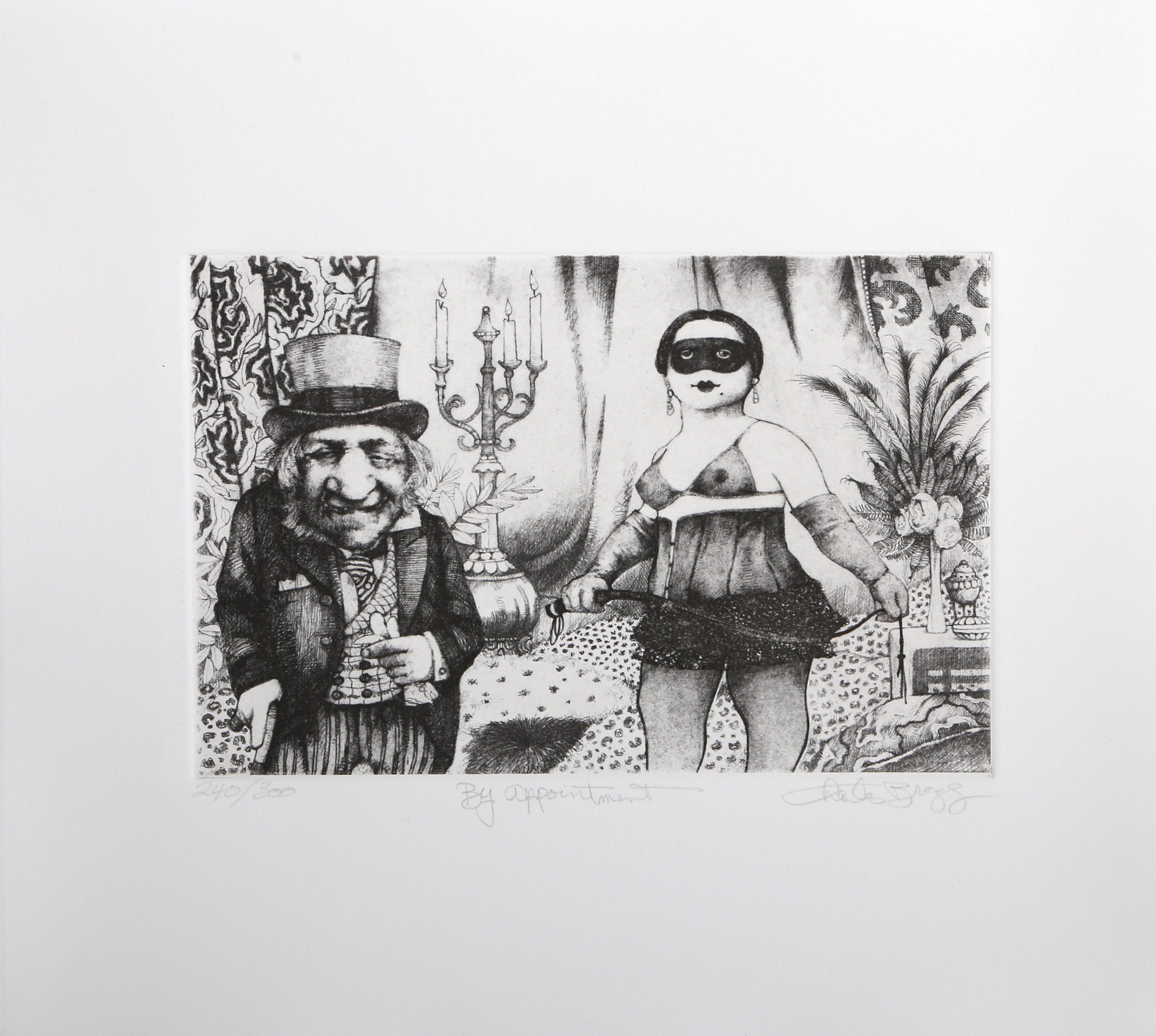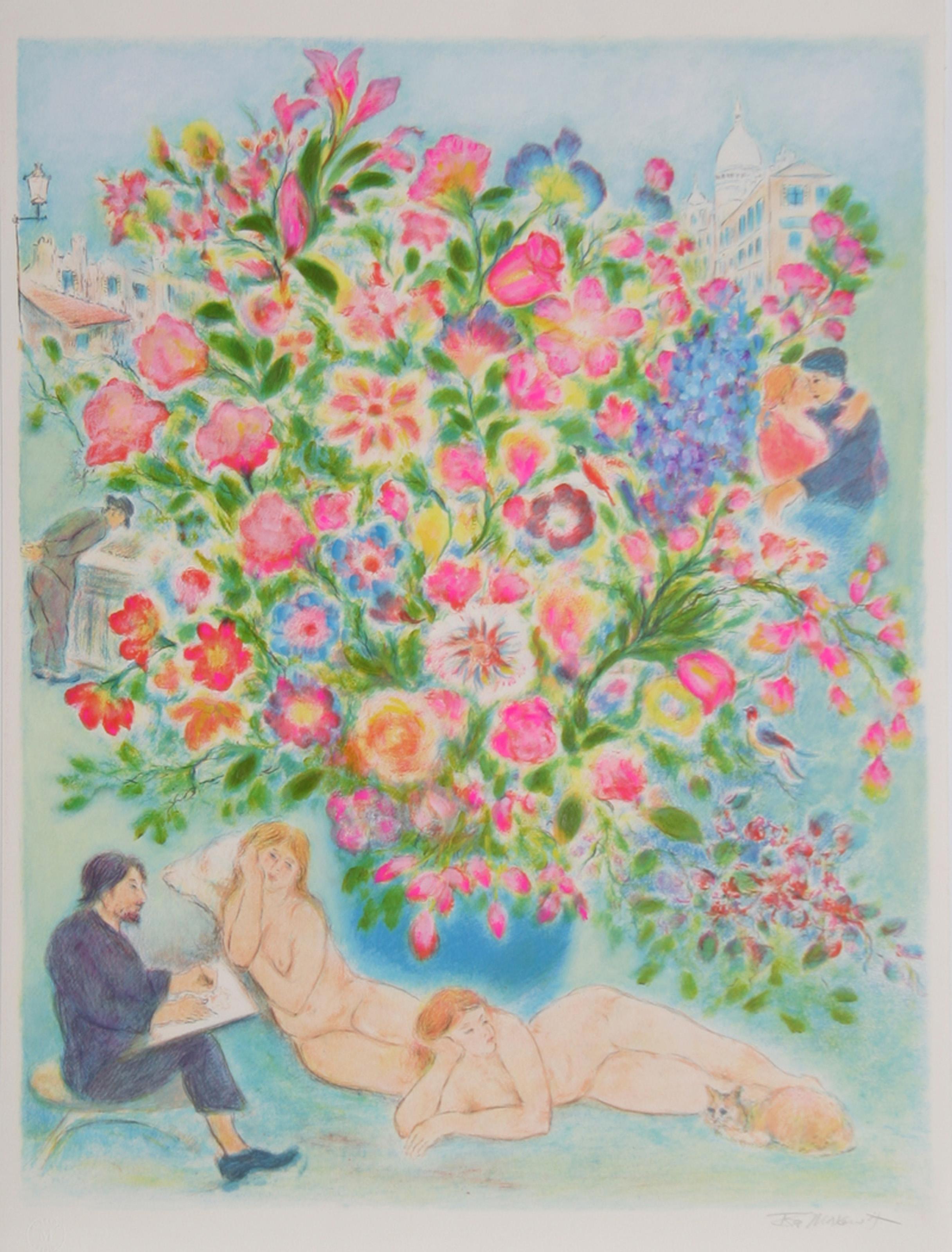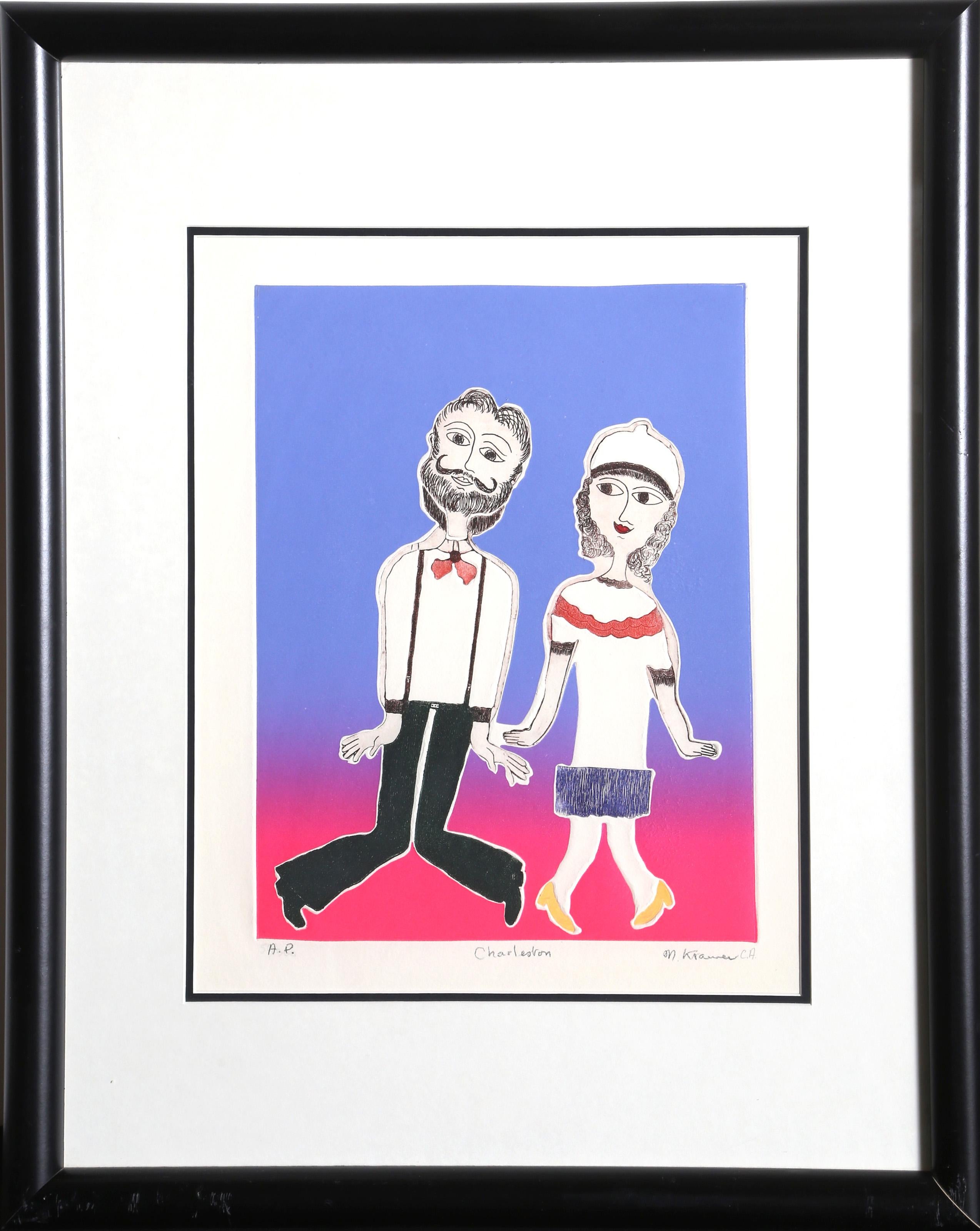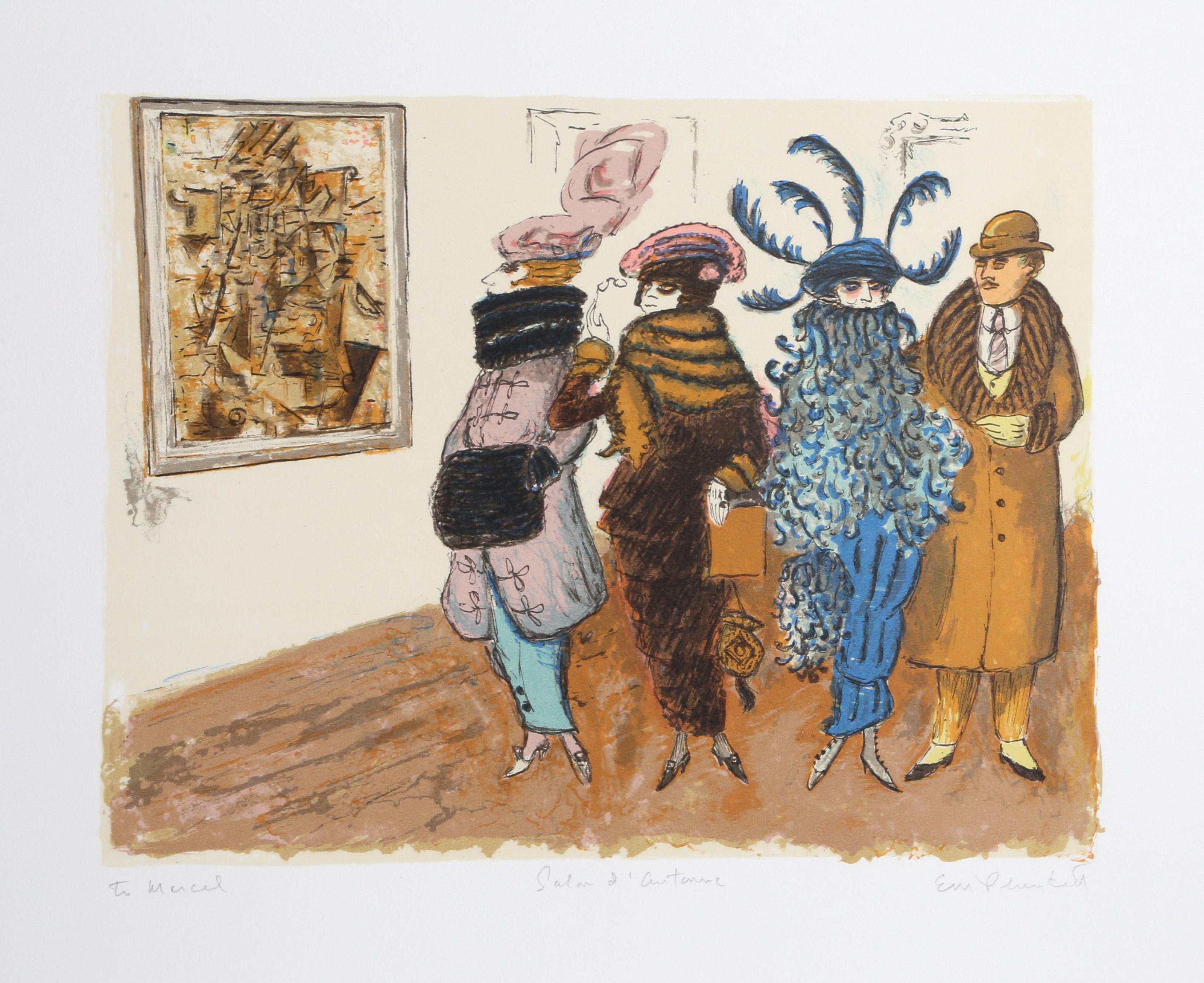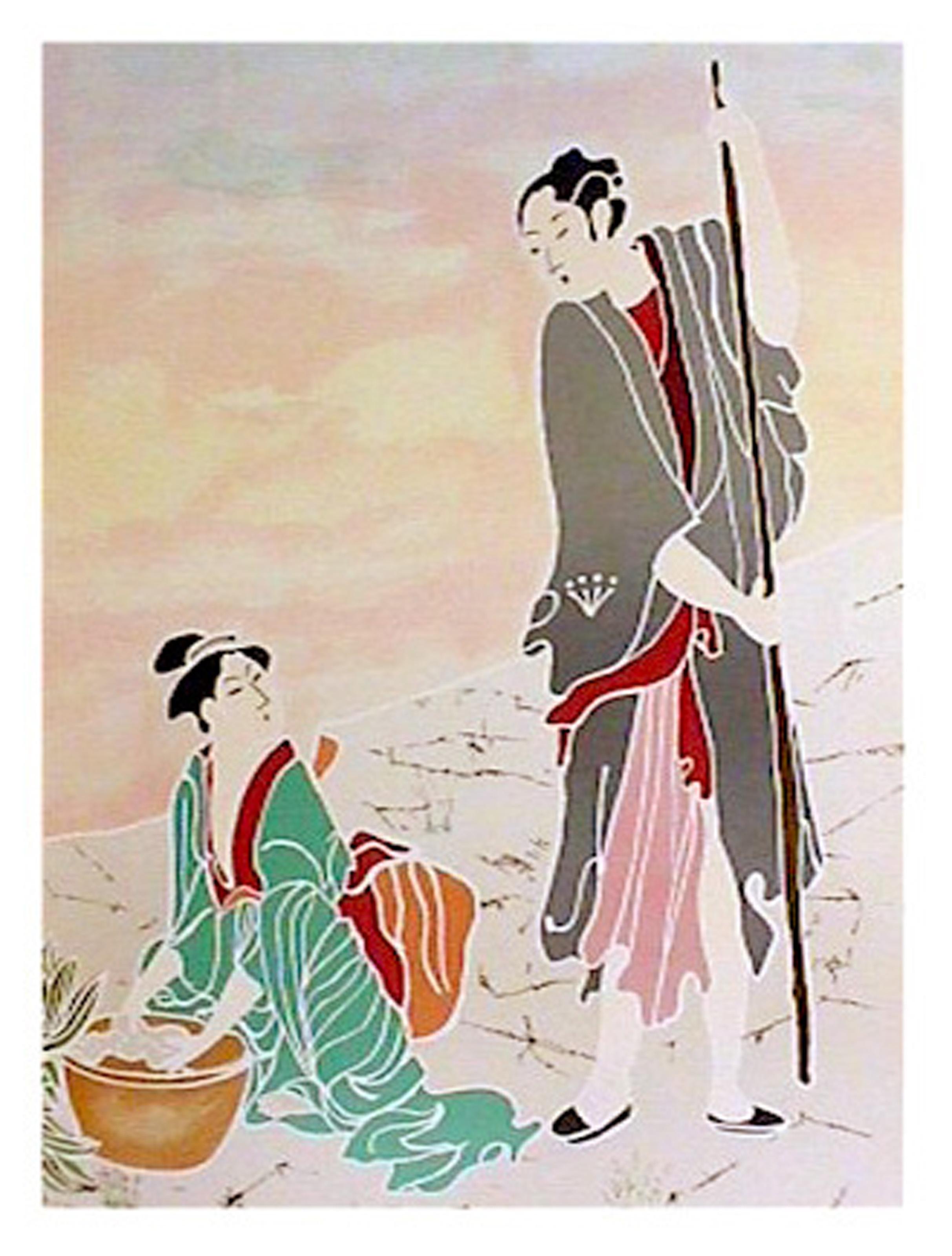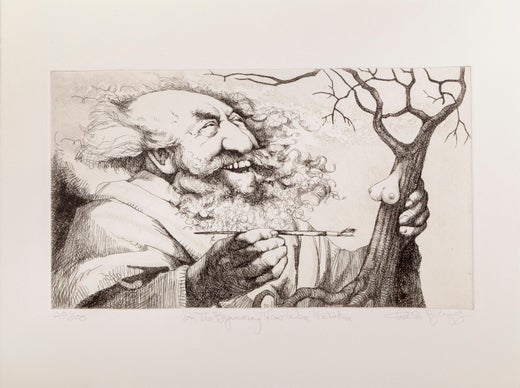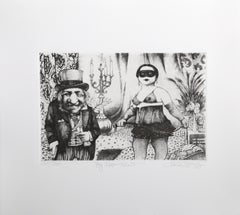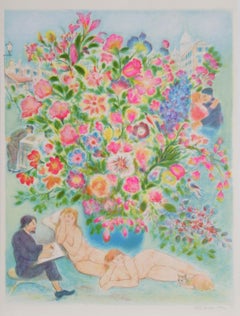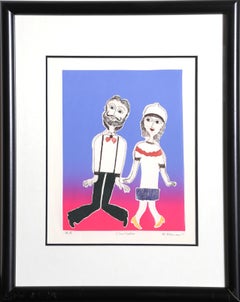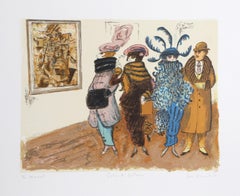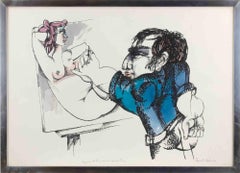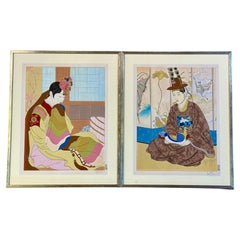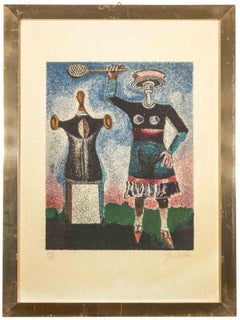Items Similar to Artist and Model, Folk Art Lithograph on Japon paper by Charles Bragg
Want more images or videos?
Request additional images or videos from the seller
1 of 5
Charles BraggArtist and Model, Folk Art Lithograph on Japon paper by Charles Bragg1970-1979
1970-1979
$450
£340.96
€391.22
CA$633.22
A$696.09
CHF 365.83
MX$8,453.02
NOK 4,563.65
SEK 4,323.74
DKK 2,919.81
About the Item
Charles Bragg, American (1931 - 2017) - Artist and Model, Medium: Lithograph on Japon paper, signed and numbered in pencil, Edition: AP XXV, Image Size: 8 x 13.75 inches, Frame Size: 22 x 28 inches
- Creator:Charles Bragg (1931, American)
- Creation Year:1970-1979
- Dimensions:Height: 22 in (55.88 cm)Width: 28 in (71.12 cm)
- Medium:
- Movement & Style:
- Period:
- Condition:
- Gallery Location:Long Island City, NY
- Reference Number:Seller: RO603371stDibs: LU46615025402
Charles Bragg
Charles Bragg, born in 1931 in St. Louis, Missouri, was an American artist, author and one of the art world’s best-known satirists. His works often featured celebrities or ordinary people depicted in a humorous—and sometimes macabre fashion—across his sculptures, stories, prints, and paintings. “You observe the human race and the world, and, if you don't get a kick out of it. I think you're missing something,” Bragg once mused. Bragg attended the High School of Music and Art in Harlem before moving to California. His early visual art stemmed from commissioned portraits, and, over time, he began to inject his own political views in sharp satires of society at large, which brought him acclaim and critical success. He was the recipient of numerous honors, notably including the Gold Medal from the National Society of Illustrators as well as the Award of Merit from the Art Directors Guild of New York. Today, his works can be found in the collections of the Pushkin Museum in Moscow; the Albrecht Museum of Art in St. Joseph, Missouri; the Loch Haven Art Center in Orlando, and the Stedelijk Museum in Amsterdam, among others. Bragg died on January 9, 2017 at the age of 85.
About the Seller
4.9
Platinum Seller
Premium sellers with a 4.7+ rating and 24-hour response times
Established in 1979
1stDibs seller since 2014
3,112 sales on 1stDibs
Typical response time: 1 hour
- ShippingRetrieving quote...Shipping from: Long Island City, NY
- Return Policy
Authenticity Guarantee
In the unlikely event there’s an issue with an item’s authenticity, contact us within 1 year for a full refund. DetailsMoney-Back Guarantee
If your item is not as described, is damaged in transit, or does not arrive, contact us within 7 days for a full refund. Details24-Hour Cancellation
You have a 24-hour grace period in which to reconsider your purchase, with no questions asked.Vetted Professional Sellers
Our world-class sellers must adhere to strict standards for service and quality, maintaining the integrity of our listings.Price-Match Guarantee
If you find that a seller listed the same item for a lower price elsewhere, we’ll match it.Trusted Global Delivery
Our best-in-class carrier network provides specialized shipping options worldwide, including custom delivery.More From This Seller
View Allby Appointment, Folk Art Etching by Charles Bragg
By Charles Bragg
Located in Long Island City, NY
Charles Bragg, American (1931 - 2017) - By Appointment, Year: circa 1970, Medium: Etching, signed, numbered, and titled in pencil, Edition: 300, Image Size: 7 x 10 inches, Size: 14...
Category
1970s Folk Art Figurative Prints
Materials
Etching
Artist and Model, Modern Lithograph by Ira Moskowitz
By Ira Moskowitz
Located in Long Island City, NY
Ira Moskowitz, Polish/American (1912 - 2001) - Artist and Model, Year: circa 1979, Medium: Lithograph, signed and numbered in pencil, Edition: 250, Size: 33 in. x 24 in. (83.82 cm x...
Category
1970s Modern Nude Prints
Materials
Lithograph
Charleston, Folk Art Aquatint Etching by Mireille Kramer
Located in Long Island City, NY
Mireille Kramer, Egyptian/American (1932 - ) - Charleston, Year: circa 1979, Medium: Aquatint Etching, Signed and Numbered in Pencil, Edition: AP, Image Size: 14 x 10.5 inches, S...
Category
1970s Folk Art Figurative Prints
Materials
Etching, Aquatint
Salon d'Automne, Folk Art Lithograph by Edward M. Plunkett
Located in Long Island City, NY
Edward M. Plunkett, American (1922 - 201?) - Salon d'Automne, Year: 1980, Medium: Lithograph, signed and dedicated in pencil, Image Size: 10.5 x 13.5 inches, Size: 17.5 x 19 in. ...
Category
1980s Folk Art Figurative Prints
Materials
Lithograph
Folk Couple, Folk Art Lithograph by Gina Lombardi Bratter
Located in Long Island City, NY
Gina Lombardi Bratter, American - Japanese Couple, Year: 1979, Medium: Lithograph, signed and numbered in pencil, Edition: AP 30, Size: 35 in. x 24 i...
Category
1970s Modern Figurative Prints
Materials
Lithograph
David, Folk Art Etching by Charles Bragg
By Charles Bragg
Located in Long Island City, NY
Charles Bragg, American (1931 - 2017) - David, Year: circa 1970, Medium: Etching, signed, numbered in pencil, Edition: 300, Image Size: 8 x 6 inches, Size: 12.5 x 10 in. (31.75 x 2...
Category
1970s Folk Art Figurative Prints
Materials
Etching
You May Also Like
The artist and his Model
By Charles Bragg
Located in San Francisco, CA
This artwork "The Artist and his Model" c.1990 is an original color seigraph on Bristol paper by noted American artist Charles Bragg, 1931-2017. It is hand signed and numbered 158/300 in pencil by the artist. The image size is 8 x 13.25 inches, sheet size is 14.75 x 22 inches. It is in excellent condition, two small pieces of hanging tape remaining on the back.
About the artist.
Charles Bragg was born in St. Louis, Missouri to two Vaudeville performing parents that he traveled with throughout his childhood. He attended New York’s High School of Music and Art in Harlem and ran away with his sweetheart when he turned 18.
He studied at the Art Students League in New York and later resided in Los Angeles. Before he decided to truly pursue painting, Bragg was a cab driver, a truck driver, a stand-up comedian, and a factory worker. When he arrived in California, he began painting for the wealthy and even gave lessons. It was during this time that he began to develop satirical feelings for the upper-class he was painting.
Considered the foremost social satire artist in America, Charles Bragg is highly acclaimed for his cryptic and humorous portraits. Bragg is a spiritual descendent of Bosch, Brueghel and Daumier
His work is found in the collections of at least 20 international museums, including thePushkin Museum, Moscow, USSR - Galleria d' Arte, Moderna de Milano Stedelijk Museum, Amsterdam, Holland - Dayton Art Museum, Ohio - DowneyMuseum of Art, California - Long Beach Museum of Art, California - Wichita State University Collection - Roswell Museum Collection, New Mexico - Canton Art Institute, Ohio - Loch Haven Art Center, Orlando Florida - University of Wyoming Museum of Art - The Albrecht Museum of Art, St Joseph, Mo - St Lawrence University, Canton, NY - Gibbes Art Center, Charleston, SC - Kalamazoo Institute of Arts, Michigan ¬University of Judaism, Los Angeles, Ca - Joslyn Art Museum, Omaha, Nebraska - Tyler Museum of Art, Tyler, Texas - Joseph Hirshhorn Collection, National Gallery of Design...
Category
Late 20th Century Other Art Style Nude Prints
Materials
Screen
Price Upon Request
Painter and Model - Etching by Emanuele Pandolfini - 1970s
Located in Roma, IT
Etching hand watercolored realized by Emanuele Pandolfini in 1970s.
Hand signed.
Very good condition.
Category
1970s Modern Figurative Prints
Materials
Etching
Paul Jacoulet, La Mariee (1948) and Le Marie (1950), Framed Woodblock Prints
By Paul Jacoulet
Located in Austin, TX
A fantastic and iconic pair of Paul Jacoulet (1906 - 1960) mid century woodblock prints "La Marieé, Seoul, Corée" ("The Bride, Seoul, Korea"), 19...
Category
Mid-20th Century Japanese Showa Prints
Materials
Metal
Figures - Lithograph by Franco Gentilini - 1970s
By Franco Gentilini
Located in Roma, IT
Figures is a lithograph realized by Franco Gentilini.
Color lithograph , ex. 119/120
slab misurements cm. 31,5 x 24,5 ;paper cm. 47 x 33,5
Guarantee certificate on the back.
H...
Category
1970s Contemporary Figurative Prints
Materials
Lithograph
"Victoria" original lithograph signed by Malvin Marr "Zsissly" Albright
By Malvin Marr Albright
Located in Milwaukee, WI
The present print, "Victoria," is the most iconic example of the printmaking of Malvin Marr Albright, called Zsissly. The composition for the image comes from Albright's painting from about 1935, done while he was studying at the Art Institute of Chicago. We can see clearly in the image how he possesses the same skill for unsettling, magic realist images as his more famous twin brother Ivan Le Lorraine: The lady Victoria sits at a dining room table, surrounded by luxurious still-life objects. All the textures and surfaces of the image express a horror vacui as seen in his painted works, such as "The Trail of Time is Dust" at the Pennsylvania Academy of Fine Art. The door in this print recalls one of the more famous works by his brother, "That Which I Should Have Done I Did Not Do (The Door)" at the Art Institute of Chicago.
1947, after ca. 1935 original painting
8 1/2 x 13 inches, image
12 x 16 inches, sheet
16 1/4 x 20 1/2 frame
Signed in pencil, lower right
Title in pencil, lower left
Published by Associated American Artists Inc.
Unnumbered from the edition of 250
A painter and sculptor, Malvin Albright was born in Chicago, one of twin sons of Adam Emory Albright, famous Chicago figure painter of juvenile subjects, who often used Malvin and his brother Ivan Le Lorraine as models.
Malvin's middle name, Marr, was after Wisconsin artist Carl von Marr...
Category
1940s American Modern Figurative Prints
Materials
Lithograph
Two Figures 1968 Framed Limited Edition Etching
Located in Rochester Hills, MI
Frank Martin
Two Figures, Blue - 1968
Print size - Etching on zinc 18 x 16 inches
Edition: Signed in pencil, titled and marked 12/50
etching on zinc in color.
Frame size 25.75 x 23...
Category
1960s Pop Art Figurative Prints
Materials
Etching
Read More
Romare Bearden’s Humanity Infuses His Bright, Bold Art
Through collage, painting and printmaking, the artist foregrounded Black life in America in revolutionary new ways.
Chryssa’s 1962 Neon Sculpture Was Way ahead of the Art-World Curve
By working with lettering, neon and Pop imagery, Chryssa pioneered several postmodern themes at a time when most male artists detested commercial mediums.
More Ways To Browse
Art Deco Woman Crouching
Goyo Hashiguchi
Guy Ribes
John Lennon Erotic
Joseph Felon On Sale
Keith Haring Bad Boys
Mel Crawford
Michel Potier
Picasso Lithograph Signed Nude
Three Graces Salvador Dali
William Sewell
Yves Klein Poster
Bag One Arts Inc
Blonde Nude Photo
Edwina Sandys On Sale
Gala Nude Dali Salvador
H R Giger Art
Hans Rudolf Giger
